You’ll love the rich and cheesy flavors of this authentic Pastitsio Greek Lasagna recipe! This perfect dish is classic Greek comfort food made with layers of pasta, the perfect ground beef meat sauce with hints of cinnamon, and a thick and creamy homemade bechamel sauce.
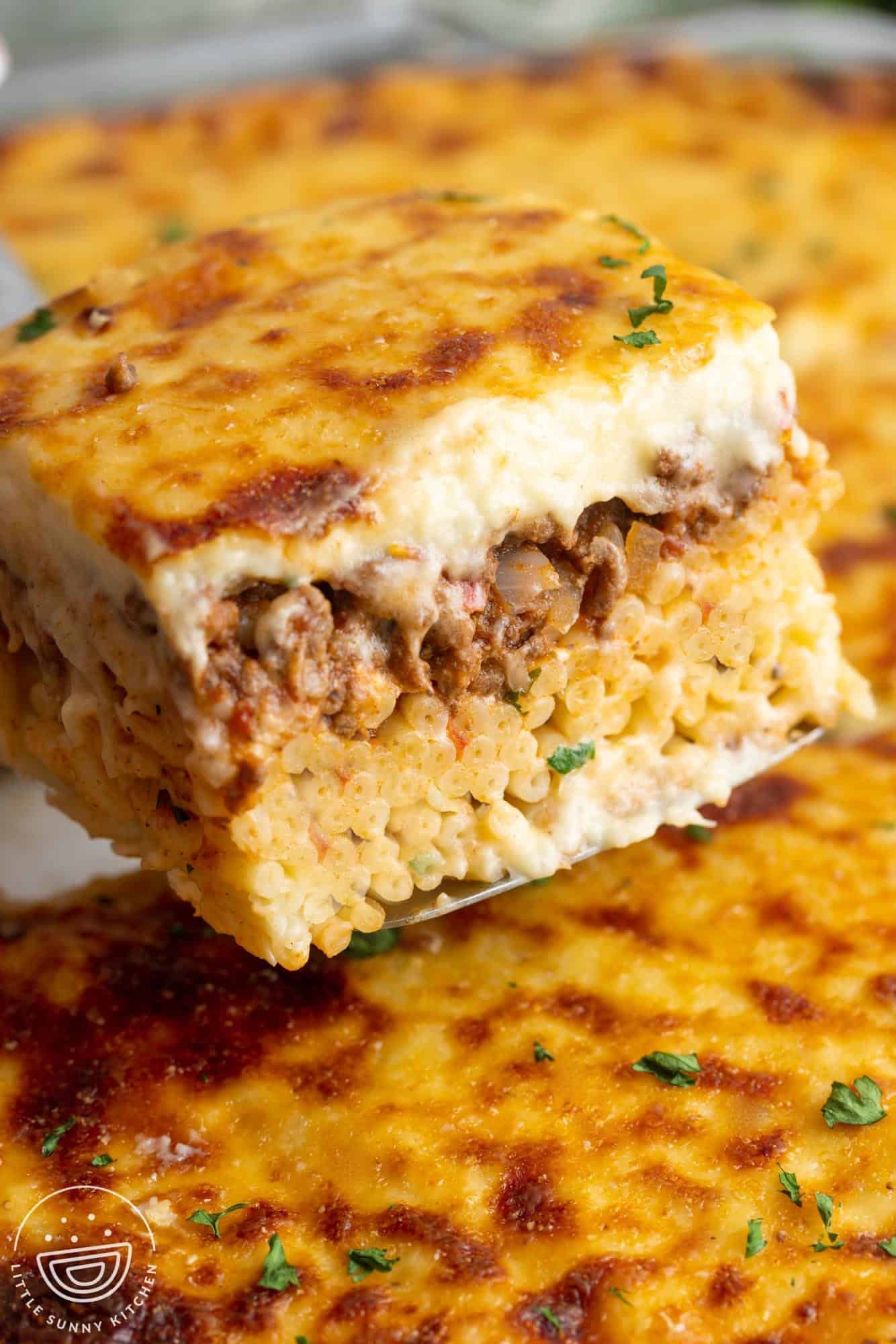
This Greek Lasagna is one of the most delicious things I’ve ever eaten. It’s incredibly rich, cheesy, and filling. My family loved it, and leftovers were promptly eaten the very next day for lunch!
Looking for a different type of lasagna recipe? Try my classic Lasagna Roll Ups, the Best Easy Lasagna Recipe, or Alfredo Chicken Lasagna Roll Ups next!
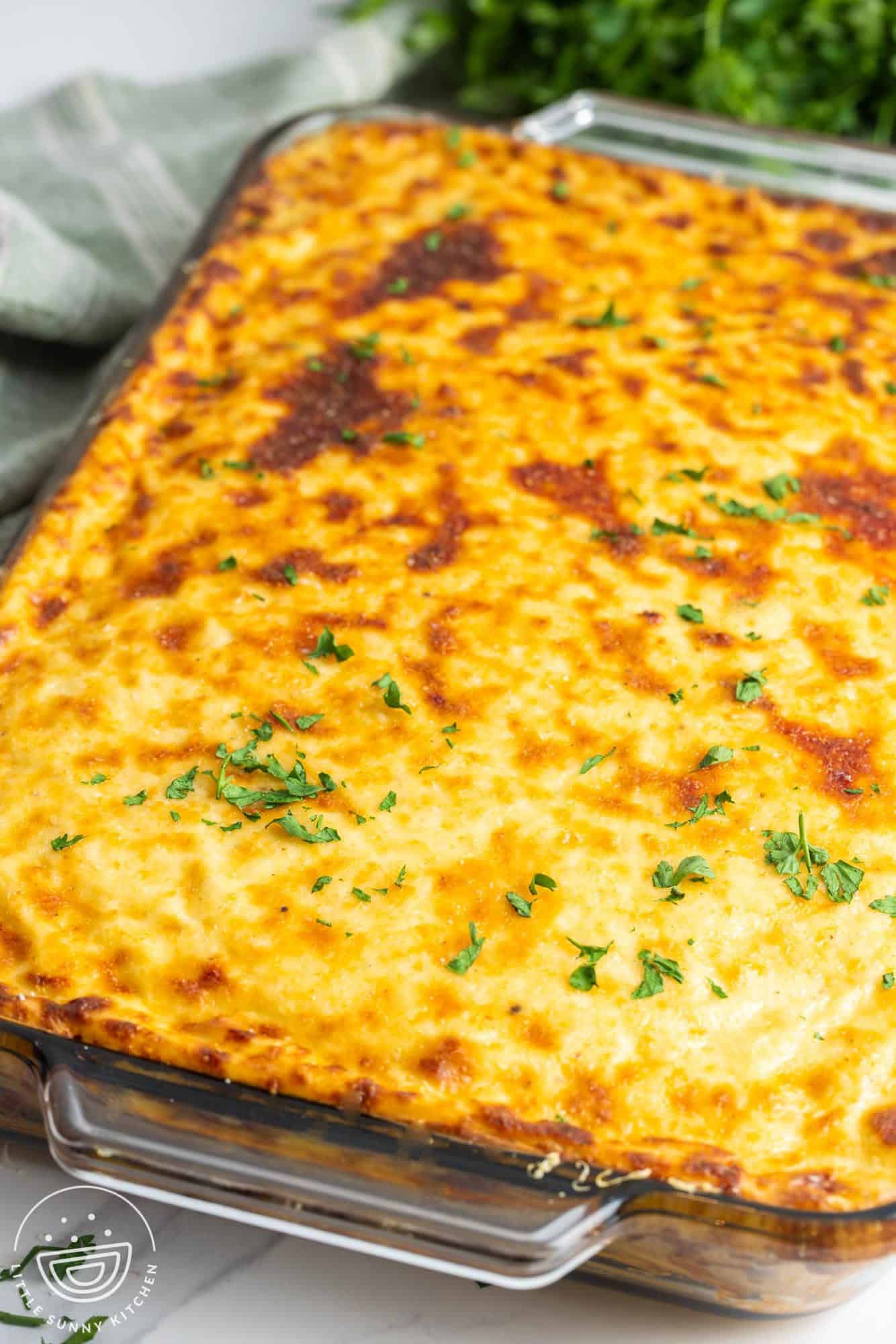
The Best Recipe for Greek Pastitsio
This recipe is truly amazing. Pasta plus meat sauce plus cheese, baked to perfection will always be one of my favorite things. The Greek twist on what I always assumed was an Italian-only dish is completely delicious!
But understand one thing: Lasagna is a lot of work – but totally worth it!
This is true for any version of lasagna. There are multiple components to make first, then a careful layering process and a long bake time in the oven. Please don’t worry though – I’ve broken down every step into easy-to-follow instructions with plenty of pictures to help you along.
I suggest making this greek pasta bake on the weekend, or on a day that you have a couple of hours to prep and make dinner. You won’t regret spending the time, I promise!
Key Ingredients in Greek Lasagna
Here’s what you need to make this amazing Greek comfort food:
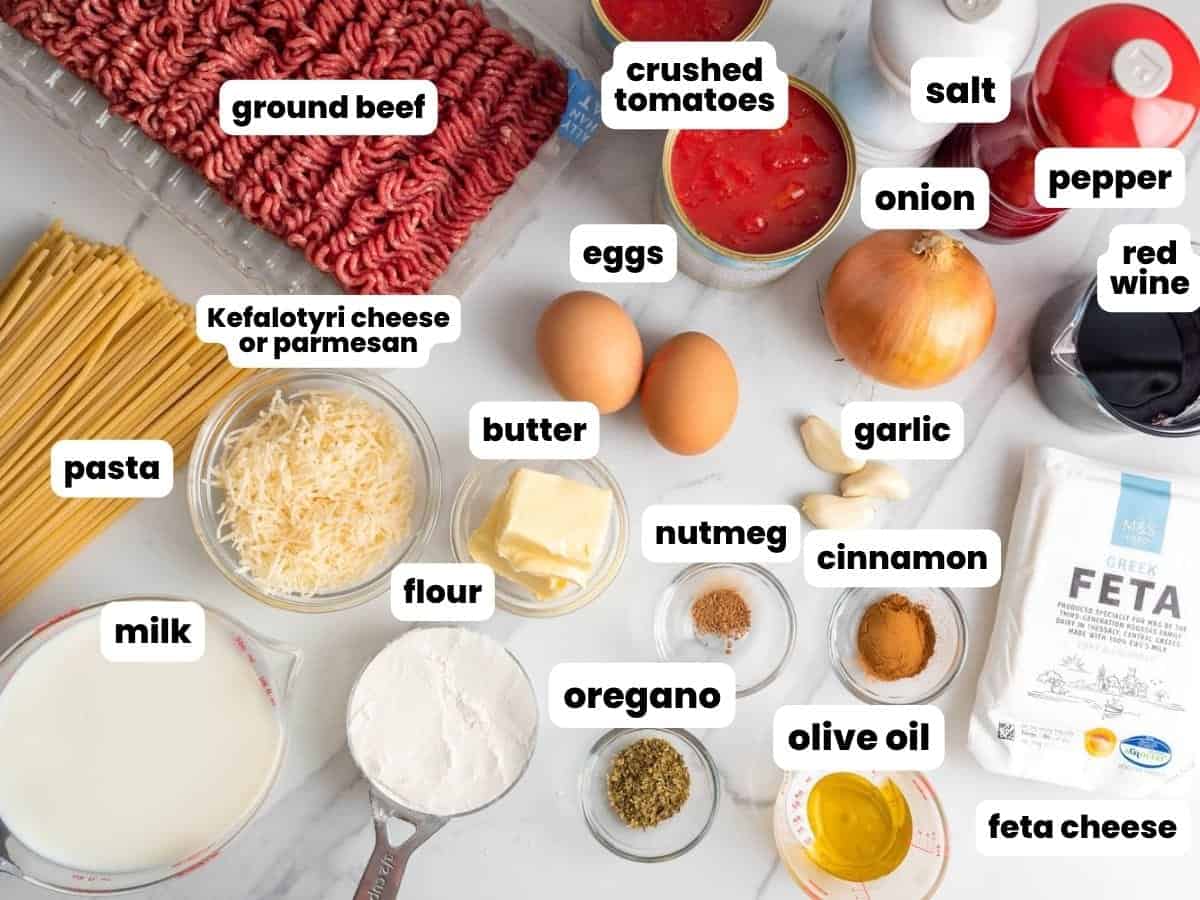
- Pastisio Noodles: If you can find them, pastitsio is the traditional pasta shape used to make Greek Lasagna. They are long pasta tubes, similar to Italian bucatini, but wider (so that bits of feta can get inside and get melty!). So, bucatini is a good substitute, as is penne.
- Cheese: Feta cheese is mixed in with the pasta, and then we’ll need a shredded cheese for the topping. If you can find Greek cheeses, look for Kefalotyri or Kasseri. These salty, sharp cheeses are similar to Parmesan cheese or Romano, so that’s an option as well.
- Spices: What makes Greek Lasagna much different than Italian lasagna is the flavor of the ragu and bechamel. You’ll need cinnamon, nutmeg, and oregano to really do this sauce right.
- Bechamel: This rich and creamy sauce is actually very simple and made with just a few simple ingredients: Flour, Butter, Cream, and Egg Yolks.
Complete list of ingredients and amounts can be found in the recipe card below.
How To Make Greek Lasagna (Pastitsio)
Make the Meat Sauce
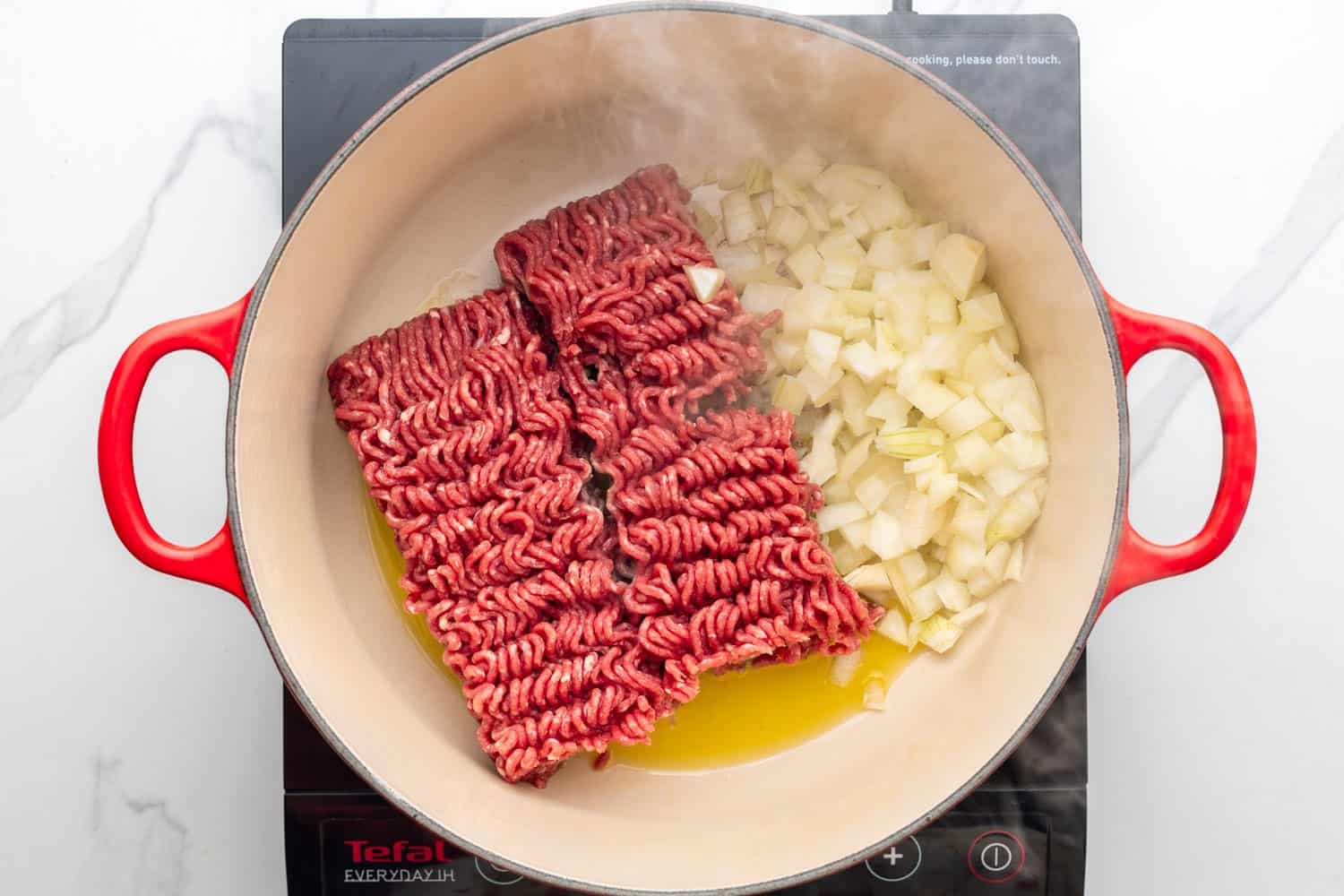
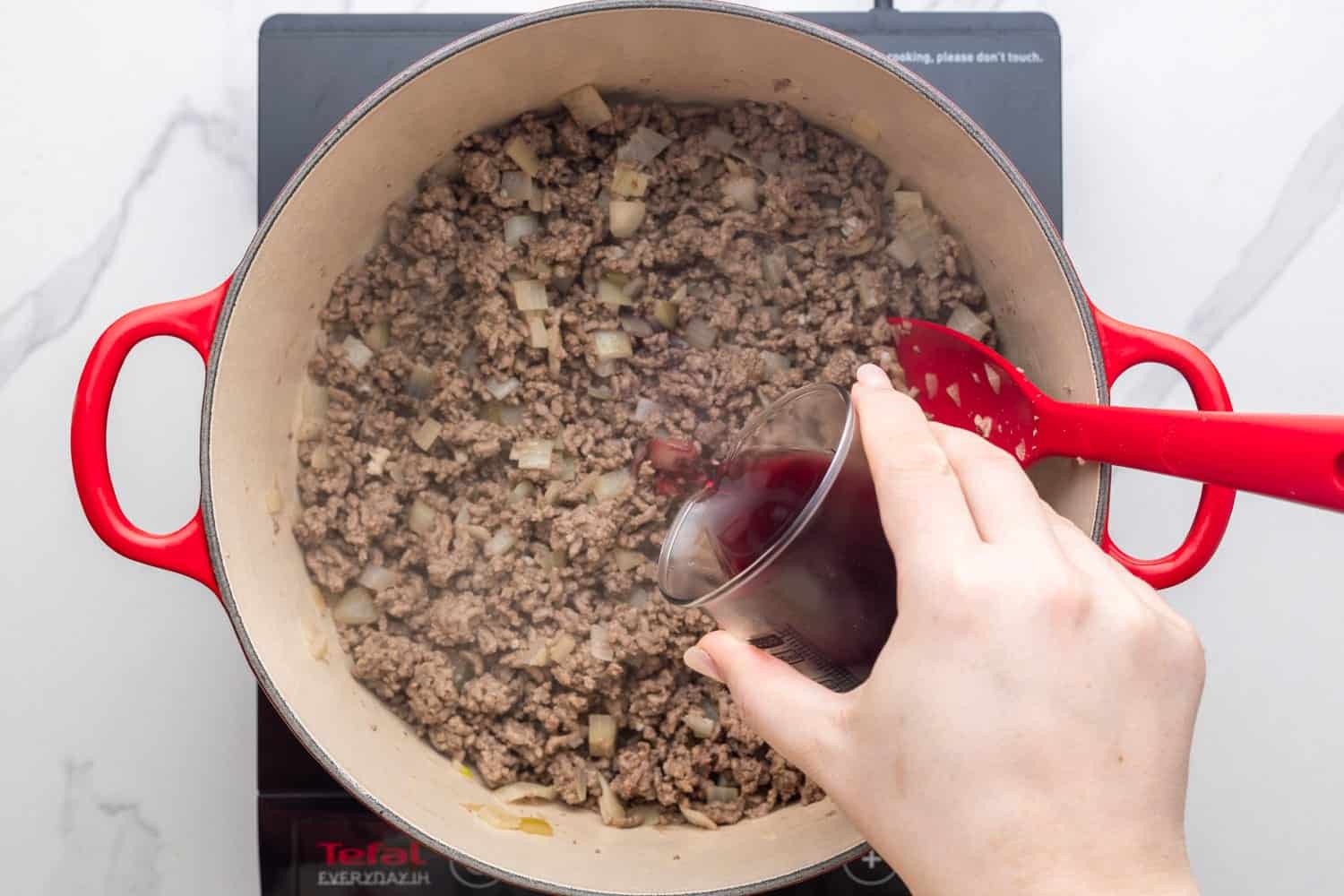
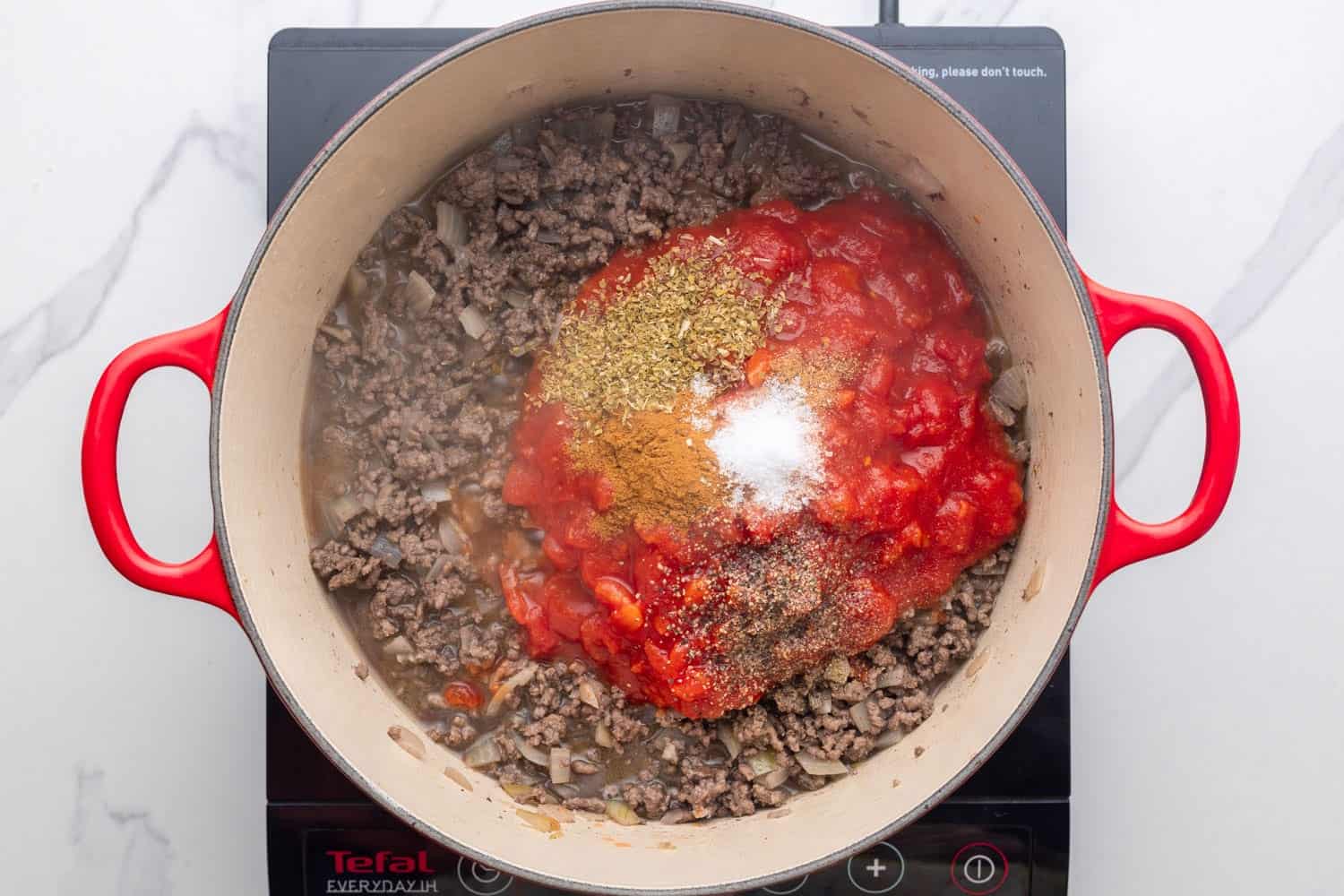

- Brown the Beef: Heat olive oil in a large pot over medium-high heat. Add diced onion and ground beef. Cook while breaking the meat apart with a wooden spoon until browned. Then add the garlic and cook for 30 seconds.
- Add Wine: Pour in a half cup of red wine and allow the meat to simmer until the liquid is reduced by half. This cooks away the alcohol and brings out all of the rich flavor of the wine.
- Simmer: Stir in the crushed tomatoes, cinnamon, oregano, salt, and pepper. Simmer the meat sauce for 30-40 minutes until the sauce thickens, then remove it from the heat.
Prepare the Pastitsio
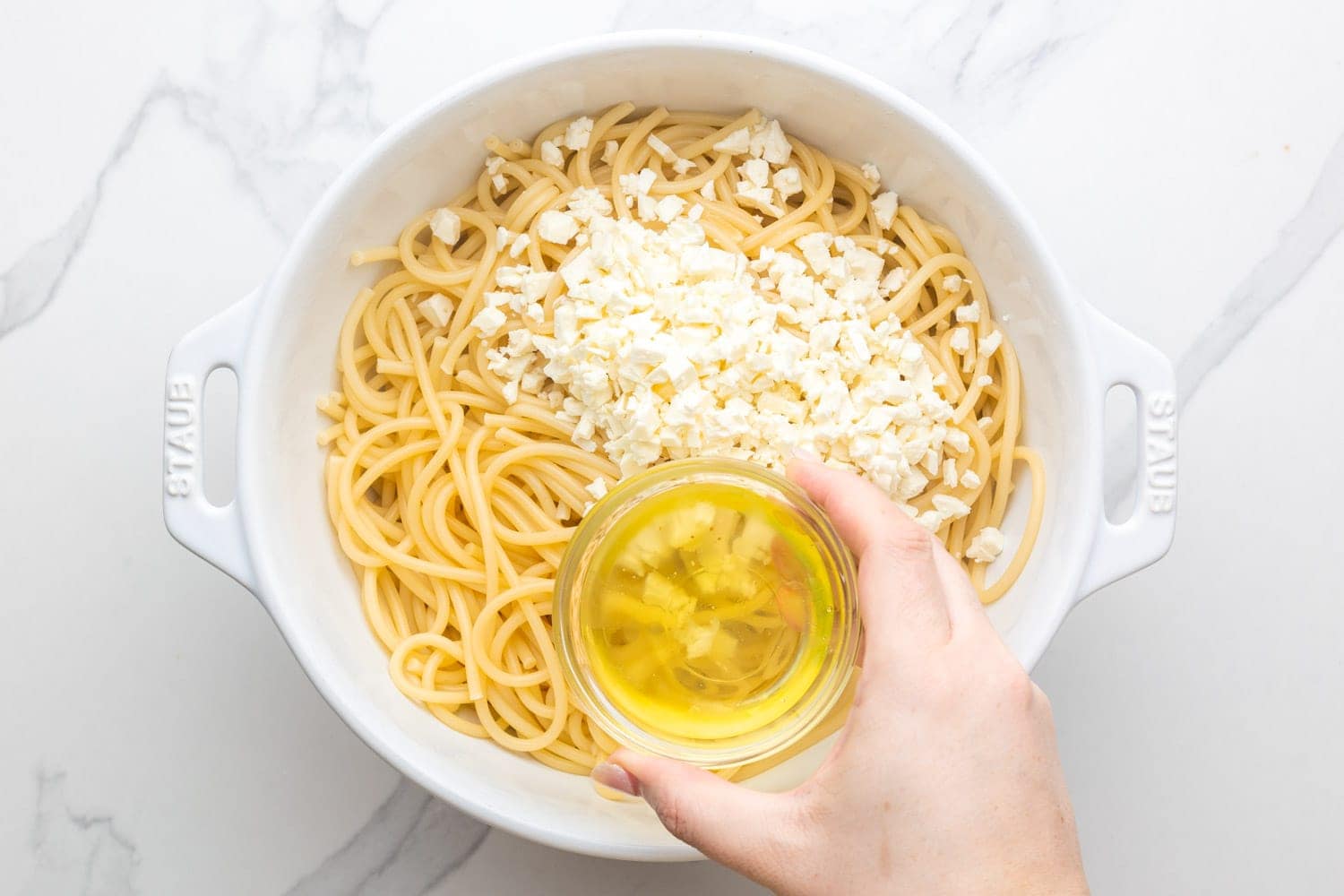
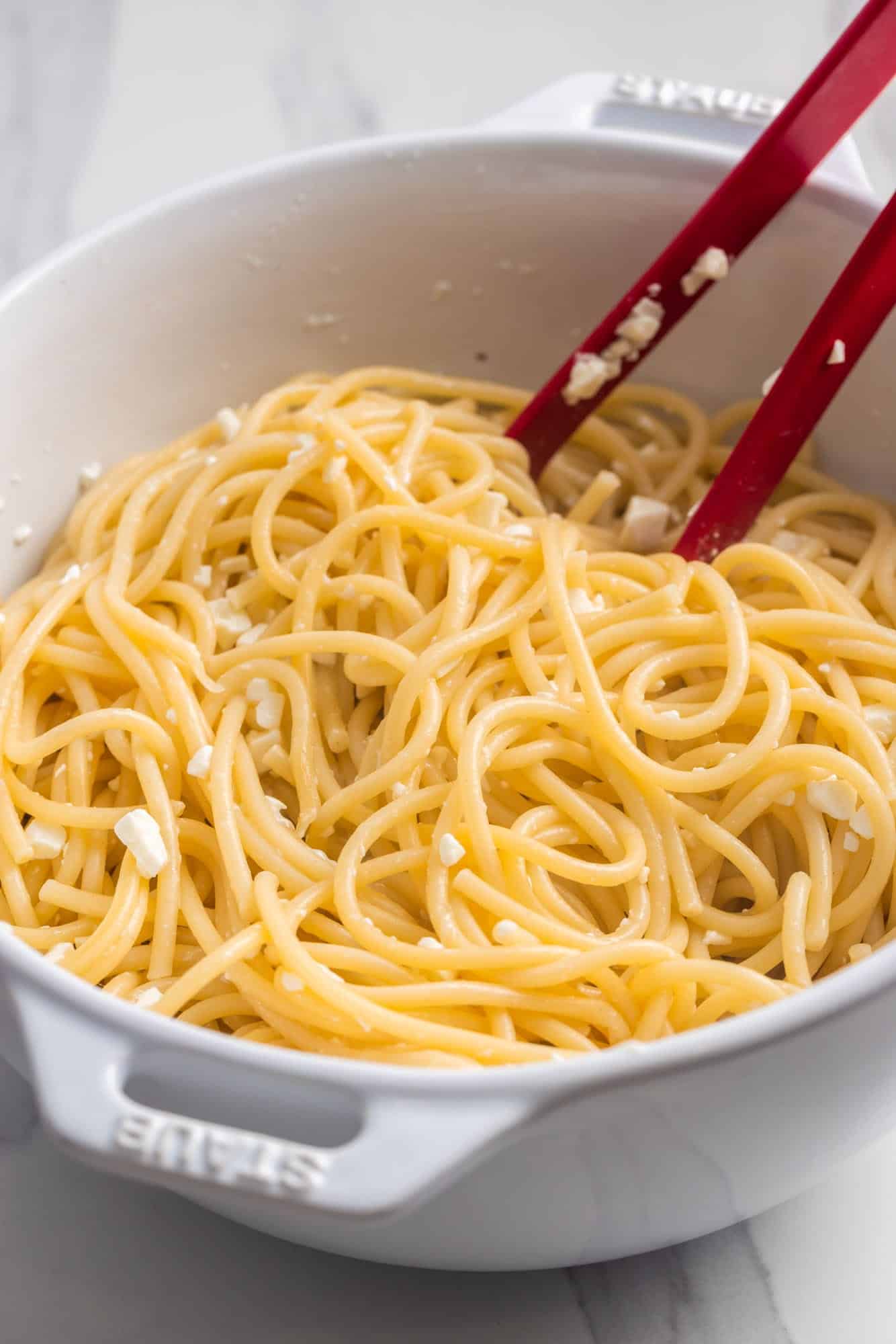
- Boil the Pasta: While the sauce is simmering, cook the noodles in salted boiling water until they are al dente.
- Add Cheese: Drain the pasta, transfer to a large bowl, and let it cool slightly, then mix in 2 beaten egg whites and crumbled feta cheese.
Tip!
Don’t over cook the pasta! It will continue to cook and soften while the lasagna is in the oven.
How to Make Creamy Béchamel Sauce for Greek Lasagna
You can also do this part while the meat sauce is simmering on the stove!

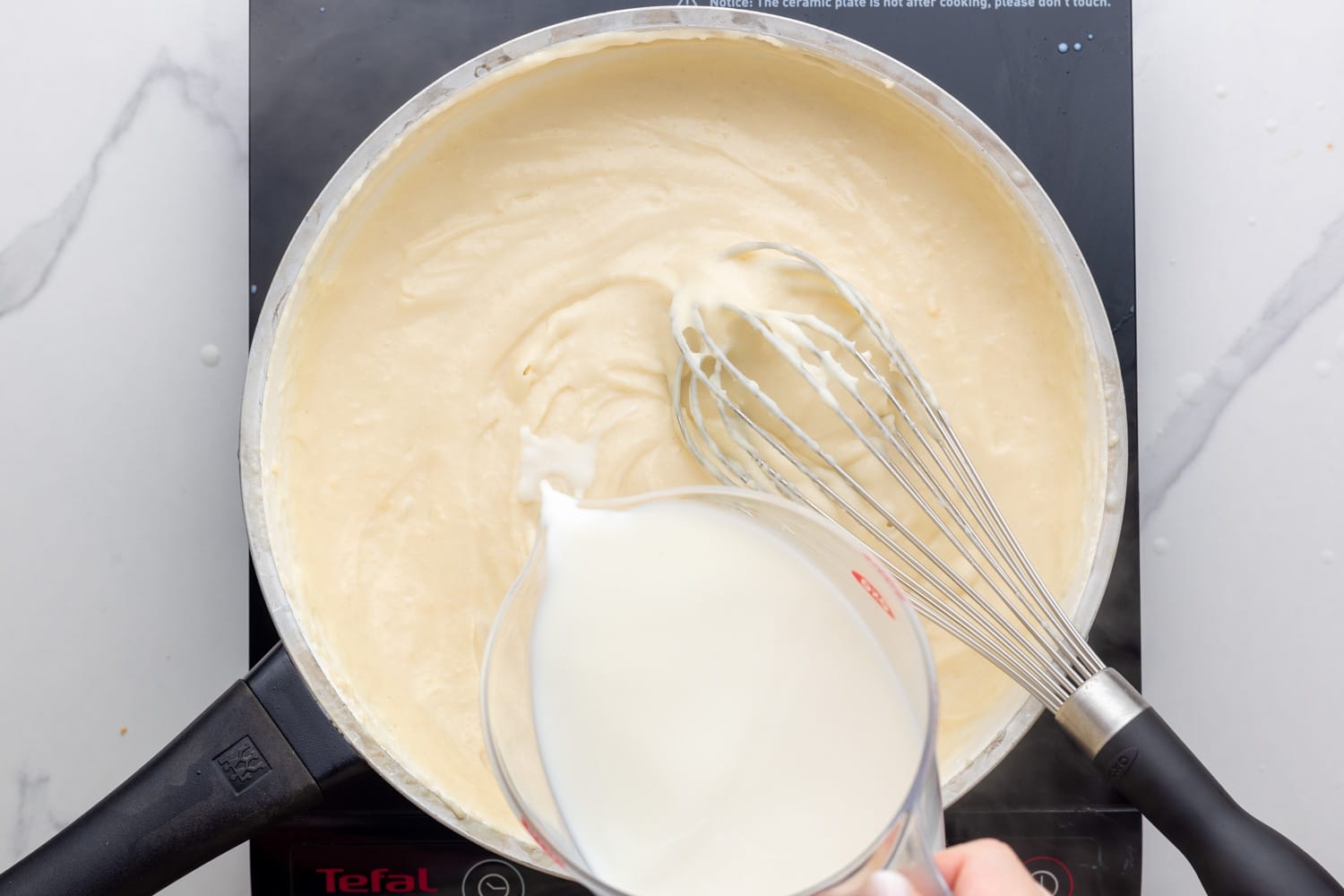
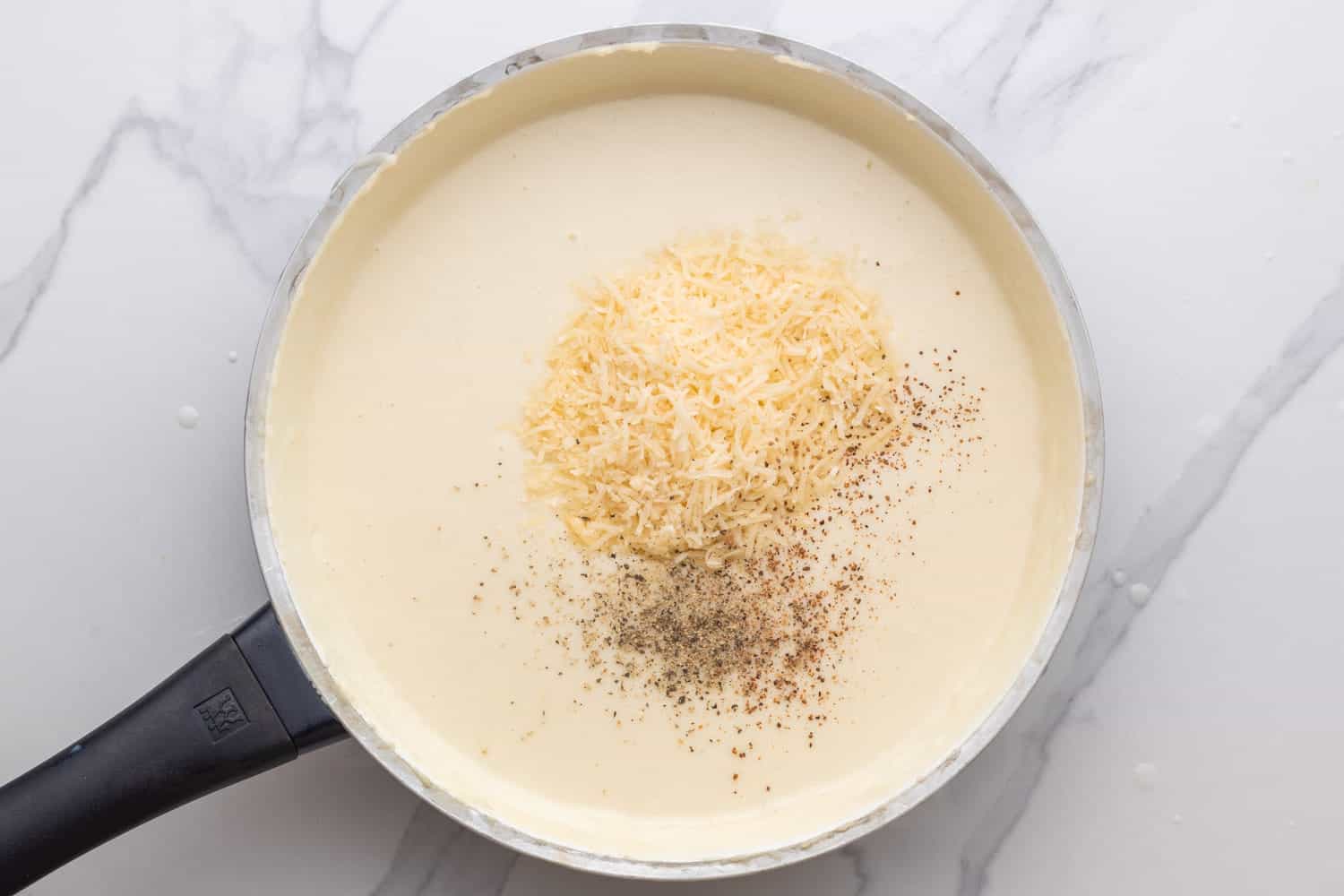

- Make Roux: Melt butter in a saucepan over medium heat. Stir in the flour and cook for two minutes, stirring constantly.
- Add Milk: Gradually whisk in the milk to avoid any lumps. Cook for 1-2 minutes, or until the sauce thickens.
- Remove From the Heat: Stir in the salt, nutmeg and a half cup of grated cheese. Let the sauce cool for a few minutes, then whisk in the egg yolks.

How to Assemble Greek Lasagna
Once all of the components are ready, it’s time to layer and bake our pastisio lasagna! Preheat the oven to 350°F (180°C) and lightly grease a 9×13-inch pan.
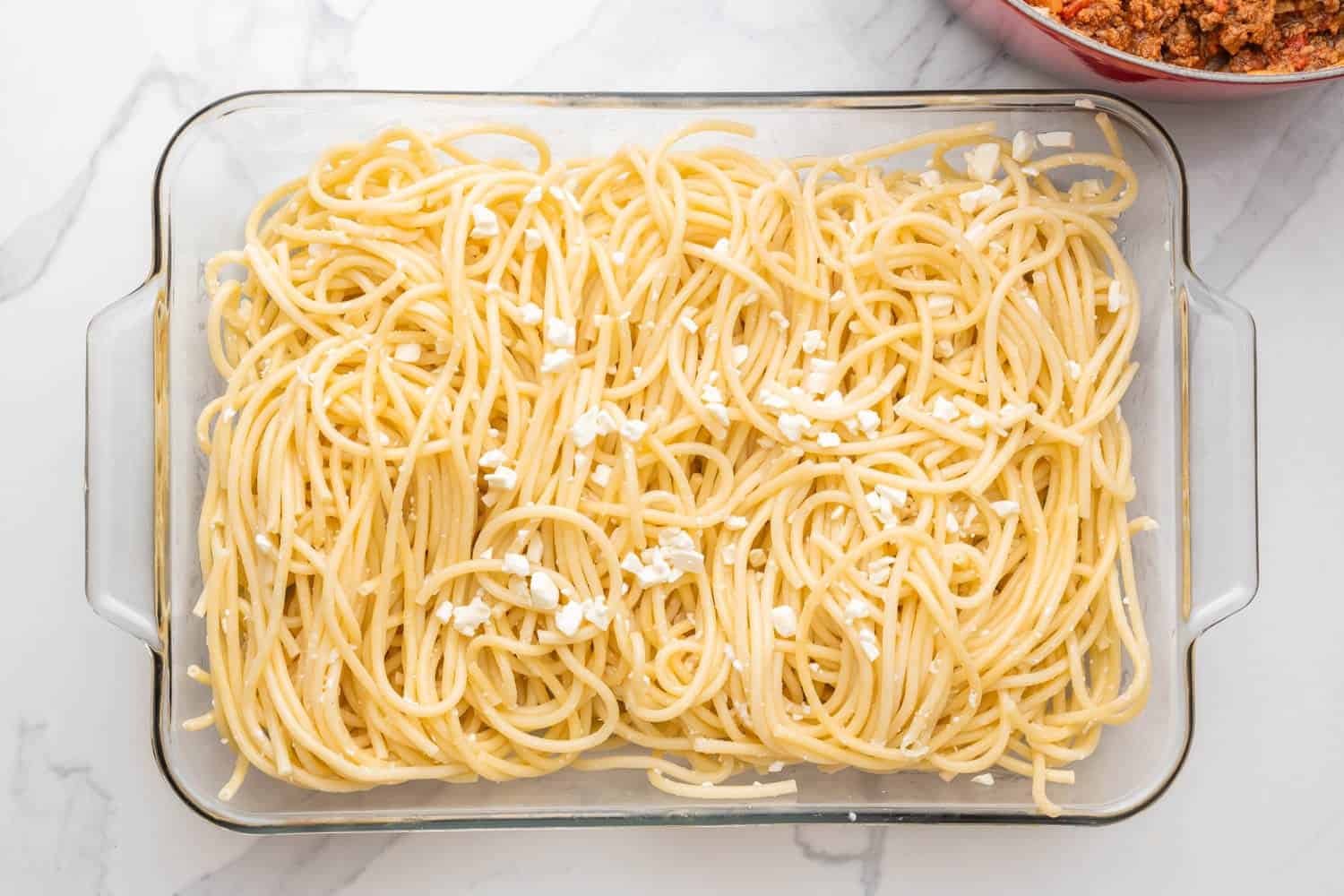
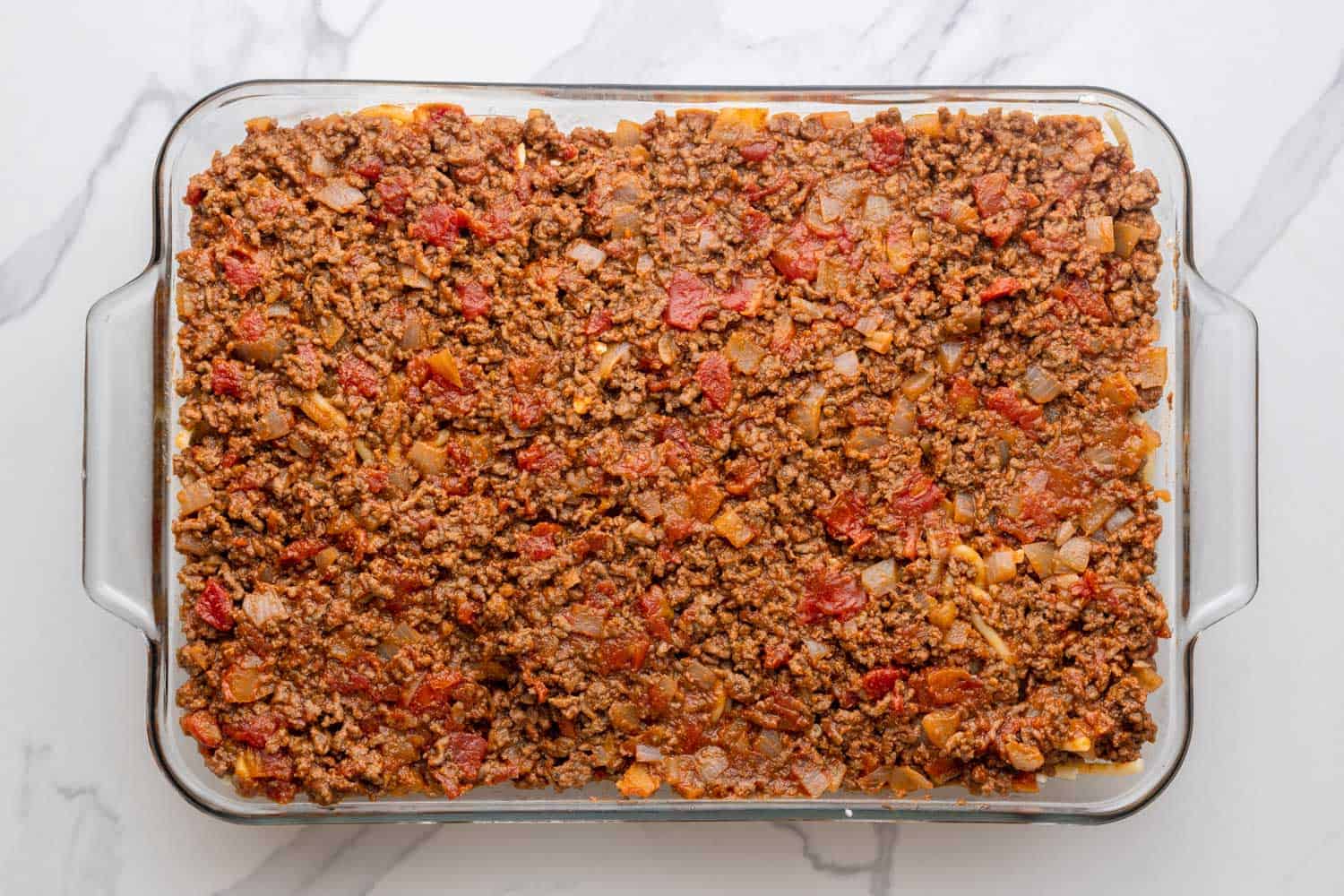
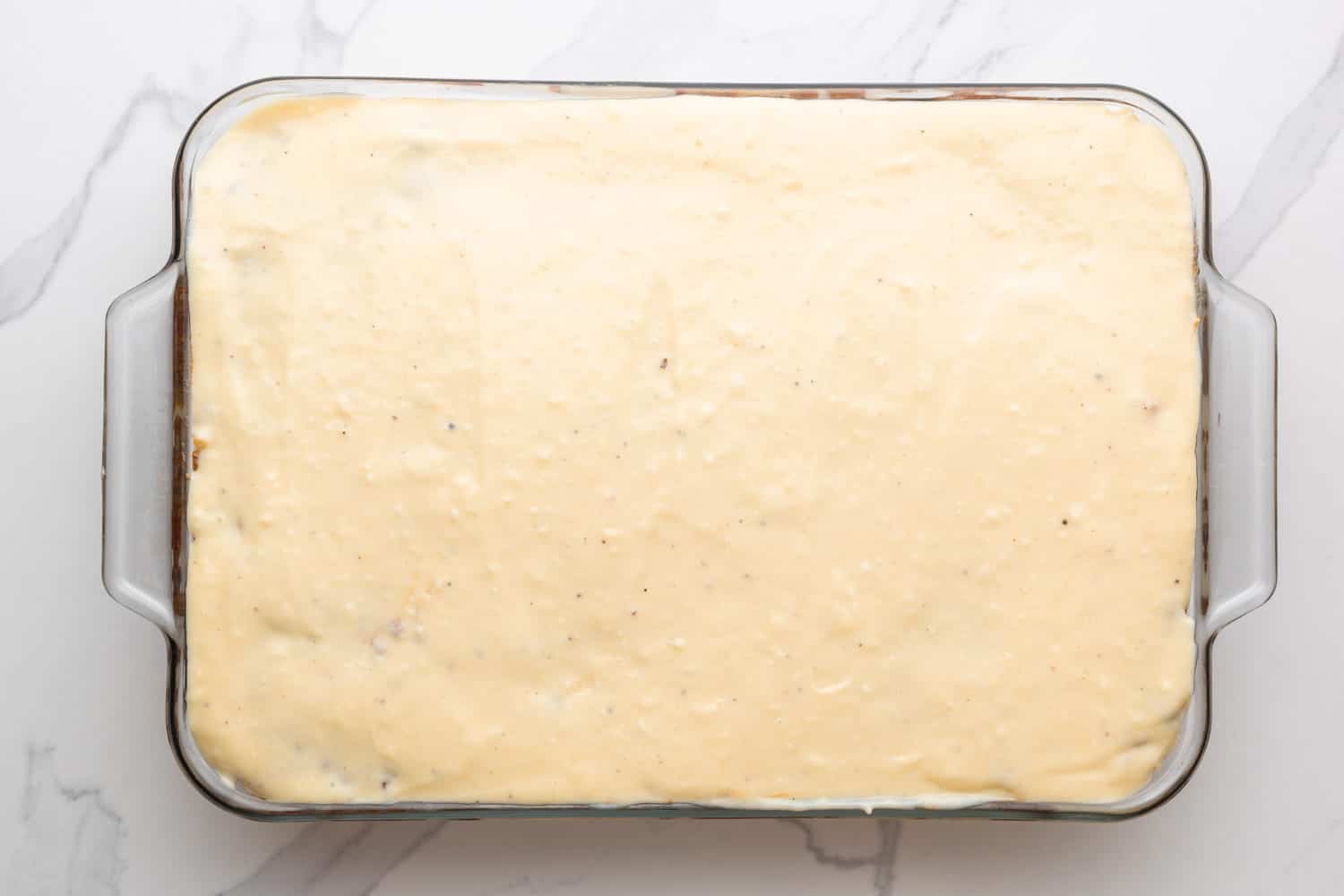
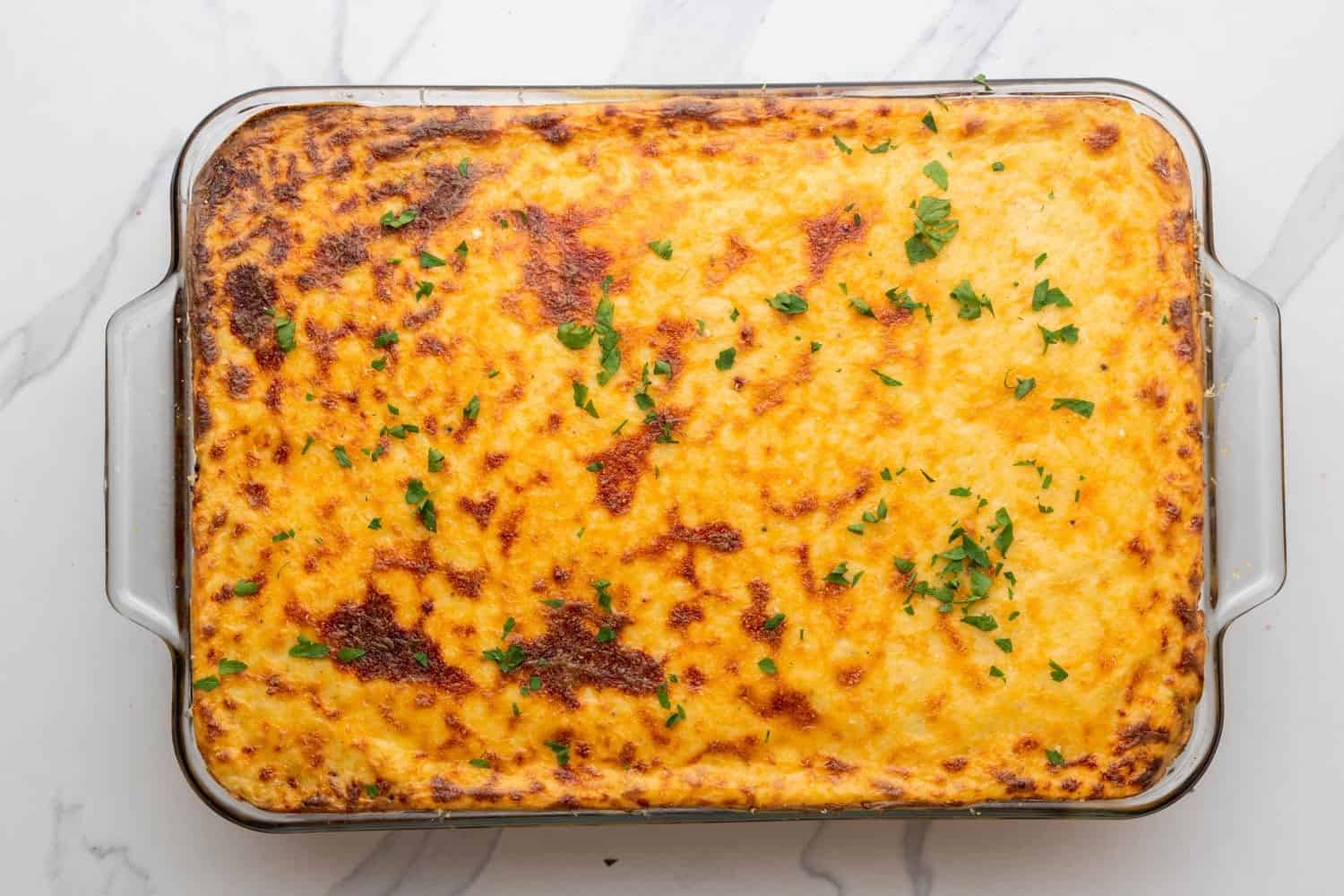
- Layer: First, add the pasta mixed with feta and egg whites to a 9×13-inch baking dish. Try to keep the noodles all in the same direction, but don’t make yourself crazy with it! Top that with the meat sauce, and then finish with the creamy bechamel sauce. Sprinkle with the remaining shredded cheese.
- Bake: Bake Greek lasagna for 40-45 minutes, uncovered, until the top is set and golden brown. Allow to set for 15-20 minutes, then garnish with chopped fresh parsley, slice and serve.
Recipe Tips
- Use Pastitsio No. 2 pasta if possible, as it is the traditional choice for Greek lasagna. However, bucatini pasta or penne pasta can also be substituted.
- Don’t use pre-crumbled feta. A whole block of feta will be less expensive, and it will melt better into your Greek Lasagna with more delicious flavor.
- Let the bechamel cool. If you add the egg yolks to the sauce right after you cook it, the eggs will scramble. Allow the sauce to cool for 5-10 minutes first.
- Taste as you go. Taste both of the sauces and add extra salt or pepper if needed. You can add more flavor if desired, I sometimes throw in a couple of bay leaves into the meat sauce.
- Rest before serving. You must let the lasagna cool for at least 10 minutes before cutting into it, but it will be even better if you can wait 30 minutes. This gives everything time to set up, and you’ll be able to cut beautiful, neat slices.
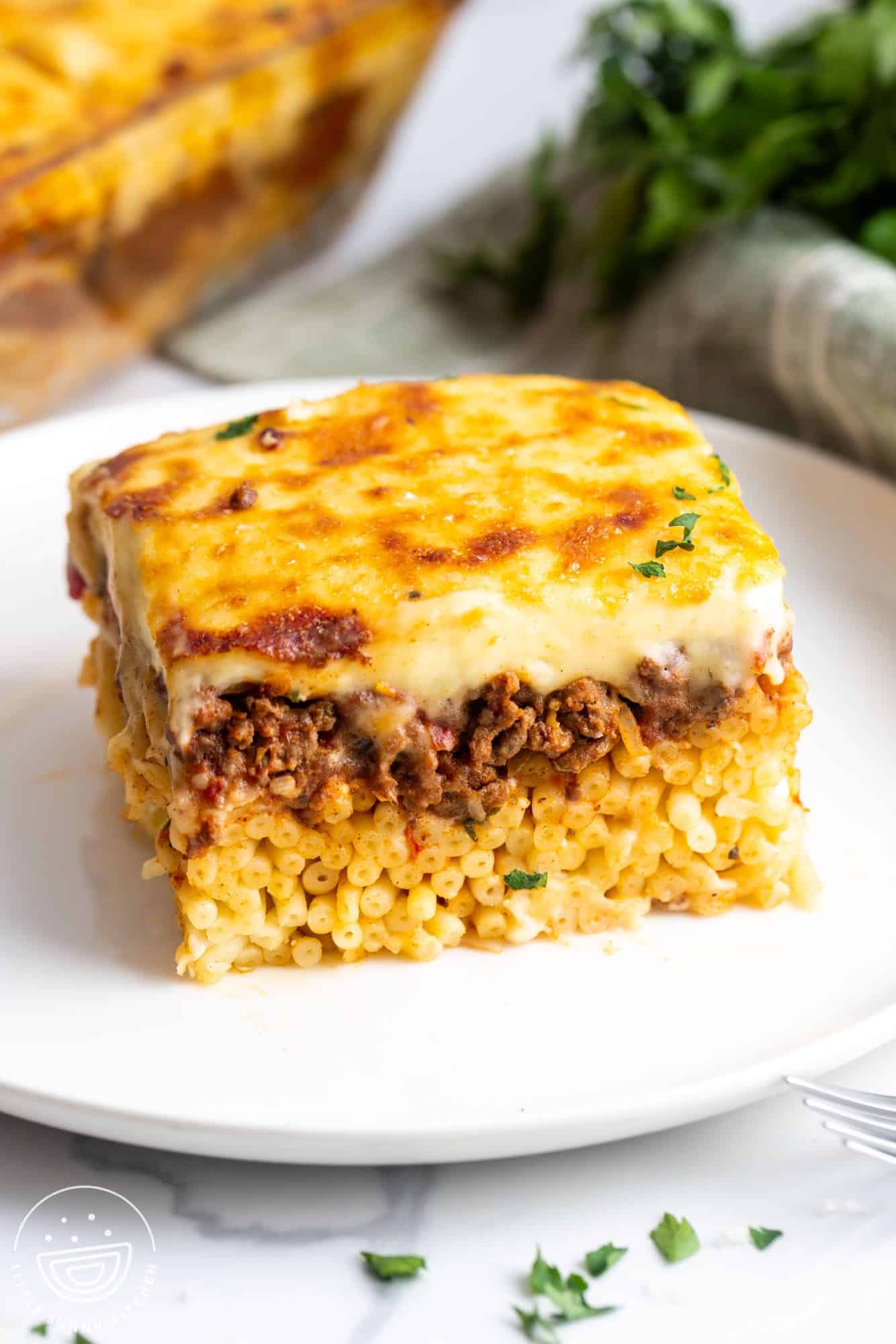
Storing Tips
Refrigerator: You can store leftovers in an airtight container in the fridge for up to 4 days. Reheat in the oven or in your microwave and enjoy. The flavors are even better the next day!
Freezer: Cool completely, then store in airtight containers in the freezer for up to 3 months. Thaw overnight in the fridge before reheating.
What To Serve With Greek Lasagna
I suggest a simple Greek Salad to add a light and nutritious element to your meal.
Recipe FAQs
What is the difference between moussaka and pastisio?
Moussaka uses eggplants and potatoes, while pastitsio uses pasta and no eggplants or potatoes.
Can Greek Pastitsio be made in advance?
Yes! You can make all of the components the day ahead of time. I suggest assembling the lasagna fully, covering it, and storing it in the fridge until you’re ready to bake.
What is a good substitute for Pastitsio pasta?
Traditional Pastitsio #2 pasta is tricky to find outside of Greece, so I’m using bucatini instead. A more convenient alternative would be ziti or penne, which you should be able to find in almost any supermarket.
What can I use instead of red wine in ragu?
If you’d prefer not to use wine, I’d suggest using beef broth instead.
This Pastitsio Recipe is the best classic Greek Comfort food! Take some time to create this delicious masterpiece for your family this weekend, or save the recipe for later!
Did you make this? Be sure to leave a review below and tag me on Facebook, Instagram, or Pinterest!
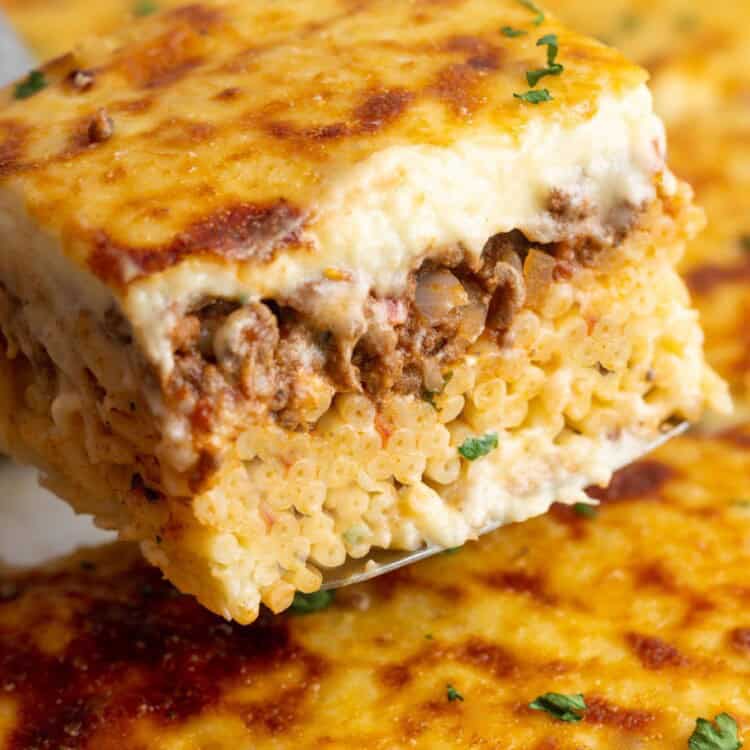
Greek Lasagna
Equipment
- 9×13″ casserole dish approx 22×33 cm
Ingredients
For the Pasta Layer:
- 1 pound (450 g) dried pasta Pastitsio No. 2 pasta preferred, but can also use bucatini, penne
- 4 ounces (113 g) feta cheese crumbled
- 2 egg whites beaten
For the Meat Sauce:
- 1 ½ pounds (675 g) ground beef lean
- 2 tablespoons (30 ml) olive oil
- 1 large yellow onion finely chopped
- 2 cloves garlic minced
- 2 28-ounce cans (1600 g) crushed tomatoes
- ½ cup (120 ml) red wine
- 1 teaspoon ground cinnamon
- 1 teaspoon dried oregano
- Salt and pepper to taste
For the Béchamel Sauce:
- 4 tablespoons (50 g) unsalted butter
- ½ cup (60 g) all-purpose flour
- 3 cups (720 ml) whole milk
- ⅛ teaspoon ground nutmeg preferably freshly grated
- ½ teaspoon salt
- ¾ cup Kefalotyri cheese or parmesan, grated – divided
- 2 egg yolks
Instructions
Make the Meat Sauce:
- Heat olive oil in a large skillet over medium heat. Add onion and ground beef, breaking it apart, cook until browned (about 5 minutes). Add garlic, and cook for 30 seconds.
- Pour in the red wine and let it simmer for a few minutes until reduced by half.
- Stir in the crushed tomatoes, cinnamon, oregano, salt, and pepper. Simmer for about 30-40 minutes until the sauce thickens. Remove from heat.
Cook the Pasta:
- Meanwhile, cook the pasta in salted boiling salted water until al dente. Drain and let cool slightly.
- Mix in the beaten egg whites and crumbled feta cheese. Set aside.
- Preheat oven to 350°F (180°C), or 160°C if using a fan oven. Lightly grease a 9×13-inch (approx 22×33 cm) baking dish and set it aside.
Prepare the Béchamel Sauce:
- Melt butter in a saucepan over medium heat. Stir in flour to create a roux, cooking for 2 minutes.
- Gradually whisk in milk, avoiding lumps. Cook until the sauce thickens (1-2 minutes).
- Remove from heat and stir in nutmeg, salt, and ½ cup of the grated cheese until melted.
- Let the sauce cool slightly before whisking in the egg yolks. This prevents them from scrambling.
Assemble the Lasagna:
- Layer the pasta mixture in a baking dish and try to arrange the pasta in one direction (for the aesthetics, doesn’t have to be perfect), followed by the meat sauce.
- Pour the béchamel sauce over the top, smoothing it out with a spatula. Sprinkle with the remaining grated cheese.
- Bake for 40-45 minutes, or until the top is golden and set.
- Allow the dish to cool for about 10 minutes before serving. This helps the layers firm up for easier slicing.
Notes:
- Use Pastitsio No. 2 pasta if possible, as it is the traditional choice for Greek lasagna. However, bucatini or penne can also be substituted.
- Kefalotryi cheese is typically made from sheep or goat’s milk and will make this recipe most authentic. If you don’t have that, Parmesan or Romano cheese are great substitutes.
- Don’t use pre-crumbled feta. A whole block of feta will be less expensive, and it will melt better into your Greek Lasagna with more delicious flavor.
- Let the bechamel cool. If you add the egg yolks to the sauce right after you cook it, the eggs will scramble. Allow the sauce to cool for 5-10 minutes first.
- Taste as you go. Taste both of the sauces and add extra salt or pepper if needed.
- To Store: You can store leftovers in an airtight container in the fridge for up to 4 days. Reheat in the oven or in your microwave and enjoy. The flavors are even better the next day!
- To Freeze: Cool completely, then store in airtight containers in the freezer for up to 3 months. Thaw overnight in the fridge before reheating.
Nutrition Information
This website provides approximate nutrition information for convenience and as a courtesy only. Nutrition data is gathered primarily from the USDA Food Composition Database, whenever available, or otherwise other online calculators.
© Little Sunny Kitchen

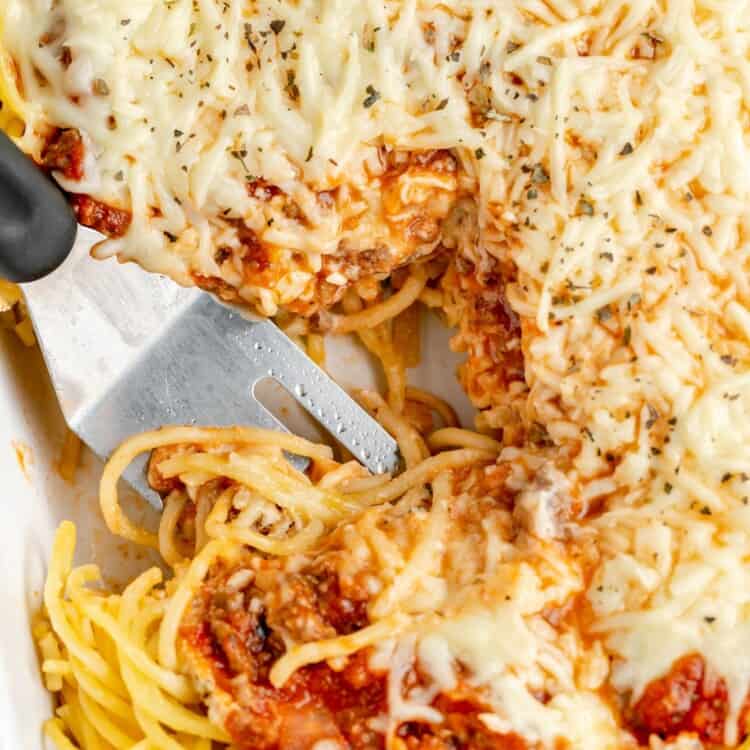
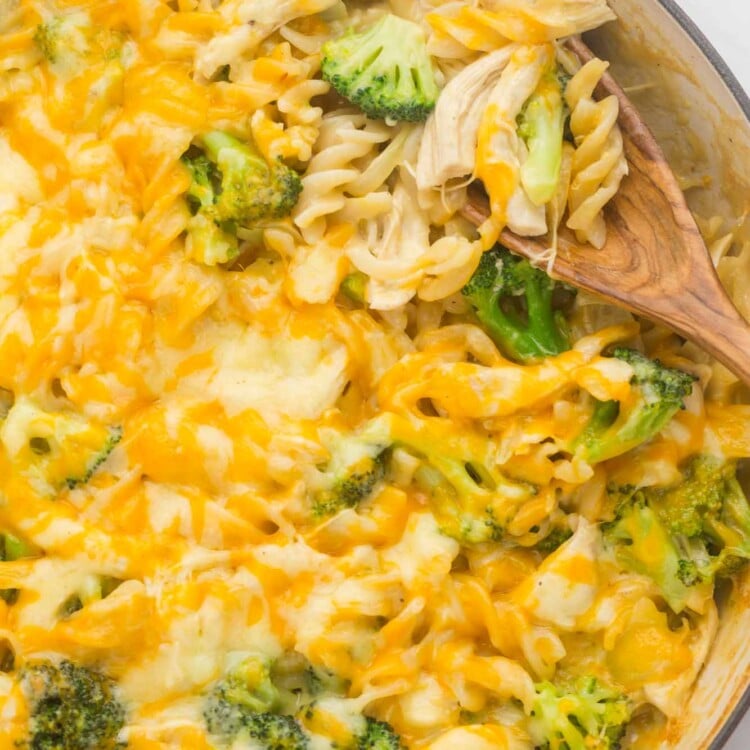


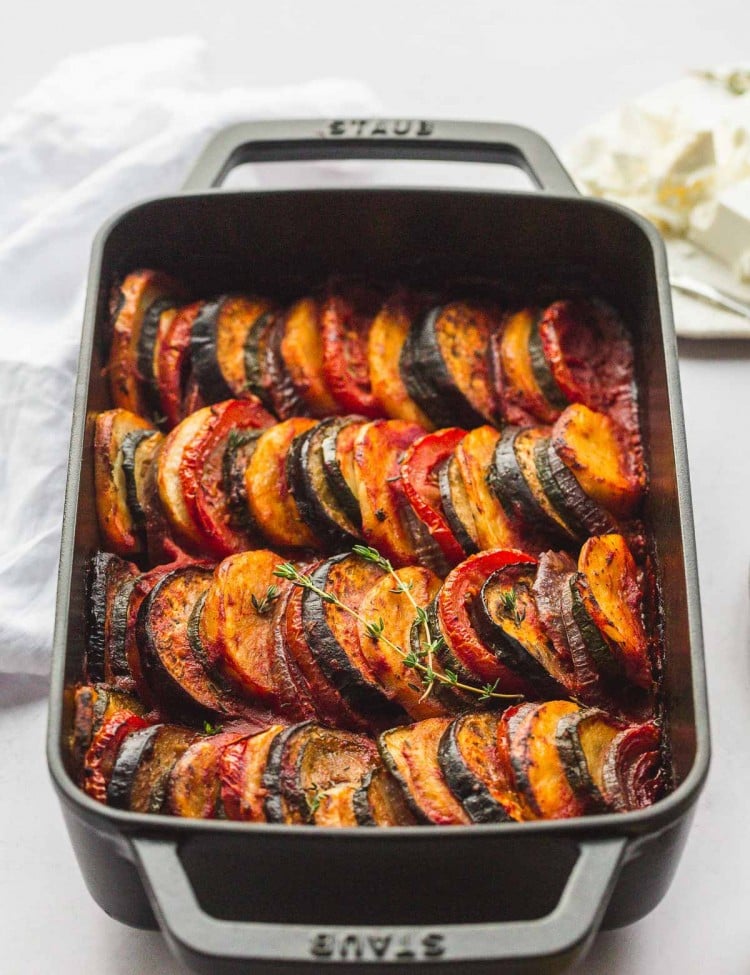
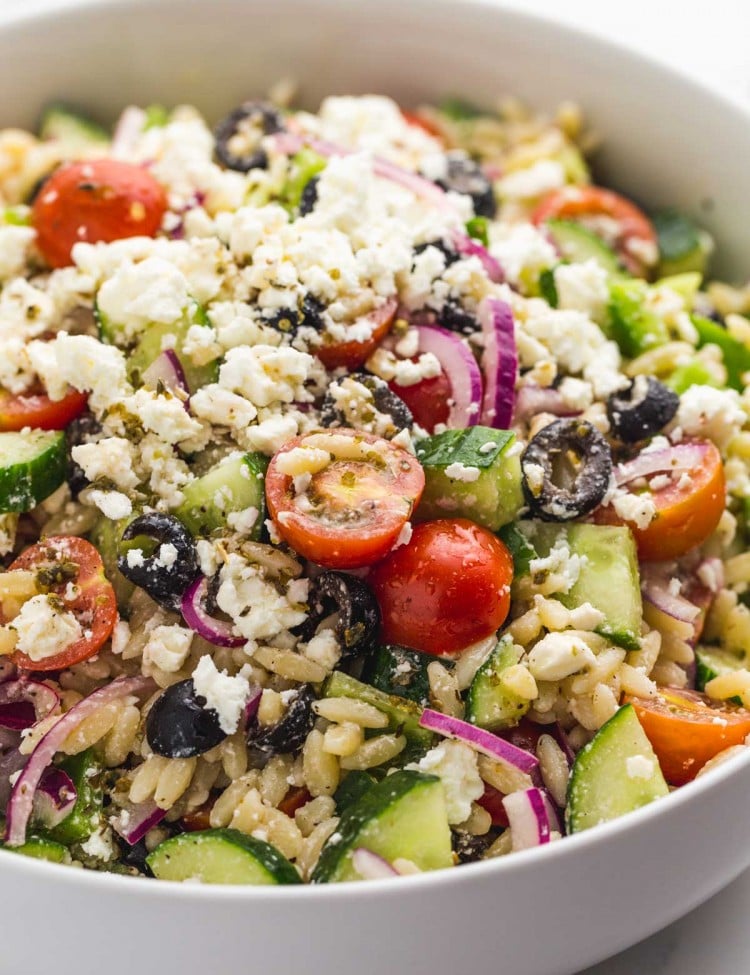

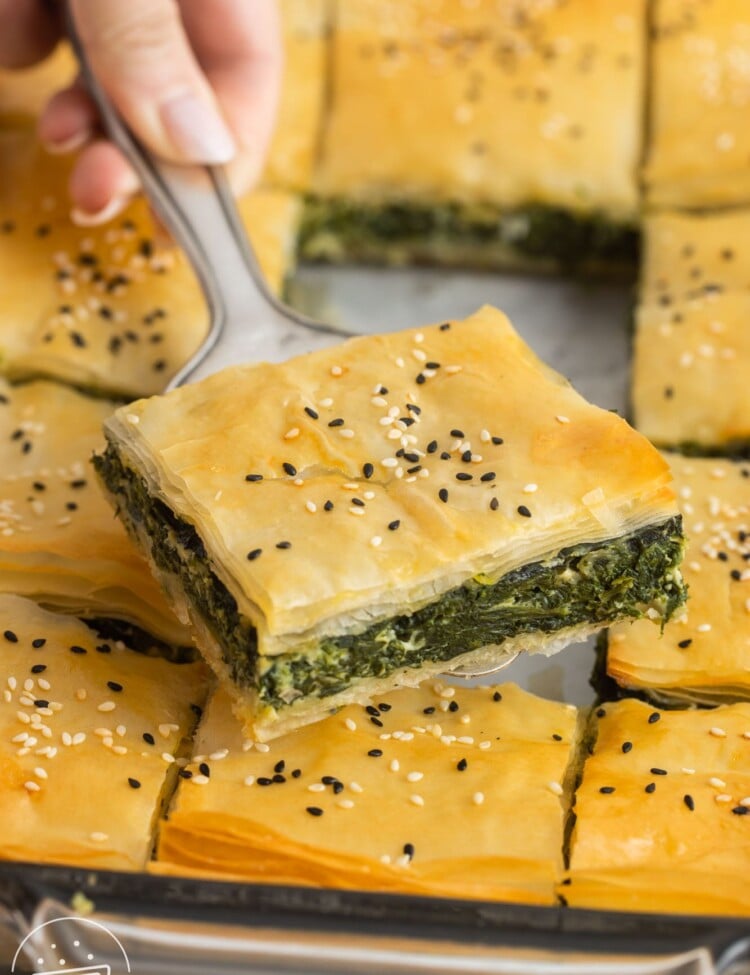


Leave a Review!